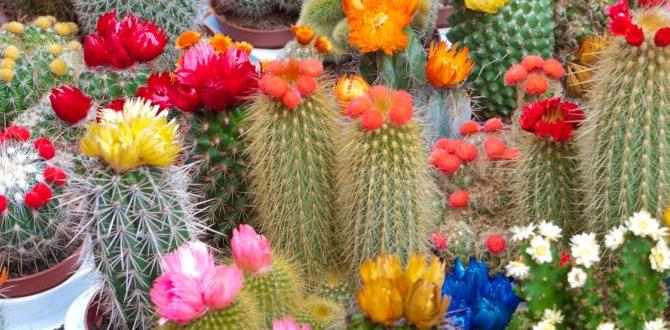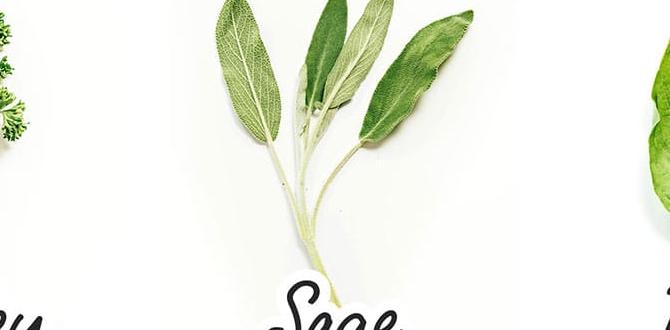Have you ever seen a hibiscus plant blooming in full glory? Their vibrant colors can brighten any garden. Caring for hibiscus plants outdoors is not just about watering them. It’s a journey that involves understanding their needs.
Imagine walking through your garden. You spot a sickly hibiscus. It looks sad and droopy. What went wrong? Most people think hibiscus plants are tough. But they need the right care to thrive.
Did you know that hibiscus plants can attract butterflies? This fun fact makes them even more special. With the right care, your garden can become a butterfly haven.
Whether you’re a beginner or an expert, learning about hibiscus plants is essential. Discover what they need. Follow simple tips. Your plants can reward you with amazing blooms. Let’s dive into the world of caring for hibiscus plants outdoors!
Caring For Hibiscus Plants Outdoors: Essential Tips And Tricks

Caring for Hibiscus Plants Outdoors
Caring for hibiscus plants outdoors can be rewarding. These colorful flowers thrive in warm sunlight and well-drained soil. Did you know they can grow as tall as 15 feet? Regular watering is essential, especially during dry spells, but avoid overwatering to prevent root rot. Feeding them with a balanced fertilizer can boost their blooming. Don’t forget to prune them to keep a neat shape! With the right care, your hibiscus will flourish and brighten any garden.Choosing the Right Location
Importance of sunlight exposure for hibiscus growth. Evaluating soil drainage and protection from wind.Hibiscus plants love sunshine. They need at least six hours of sunlight each day to thrive. Without enough light, their flowers may not bloom. Besides sunlight, soil drainage matters too. Good drainage keeps roots healthy and prevents rot. Lastly, protect your hibiscus from harsh winds. Wind damage can break branches and harm leaves. Choose a spot that is sunny, has good soil, and is safely sheltered from strong winds.
What is the best location for hibiscus plants?
The best location is a sunny spot with well-draining soil, away from strong winds.
- Sunny spot for at least six hours a day
- Soil should drain well to avoid root rot
- Protected from wind to keep branches strong
Soil Preparation and Planting
Best soil types for hibiscus plants. Stepbystep planting process.Hibiscus plants thrive in well-draining soil. The best soil types are loamy or sandy soils that hold moisture but allow excess water to pass. Here’s how to plant:
- Choose a sunny spot in your garden.
- Mix in compost to enrich the soil.
- Dig a hole twice the size of the root ball.
- Place the plant in and cover with soil.
- Water it well after planting.
Watch your hibiscus grow strong and beautiful! Healthy plants love good care, and proper soil is the first step.
What is the best soil for hibiscus plants?
The best soil for hibiscus plants is well-drained, loamy soil with plenty of organic matter. This helps the roots to grow strong and healthy.
Watering Techniques
Frequency of watering based on climate and season. Identifying signs of overwatering or underwatering.Watering your hibiscus plants can feel like a game of guessing. You need to check the weather and season. In hot summer, plants may need water every day. In winter, they might only need watering once a week. You can tell if they’re thirsty if the leaves droop or turn yellow. Too much water? Look for mushy roots or yellowing leaves. Neither of these scenarios are ideal—like wearing socks with sandals!
| Season | Watering Frequency |
|---|---|
| Spring | Every 4-5 days |
| Summer | Every 1-2 days |
| Fall | Every 5-7 days |
| Winter | Once a week |
Keep an eye on your hibiscus, and it can bloom beautifully, like a confident dancer at a party!
Fertilization Strategies
Types of fertilizers suitable for hibiscus. Timing and methods for applying fertilizers.Giving your hibiscus plants a tasty boost is key. Use fertilizers that are high in potassium and phosphorus. This helps them bloom bright and beautiful! Consider liquid fertilizers for quick results. Timing is vital too. Fertilize every 4-6 weeks during spring and summer. Give them a break in fall and winter. Remember to water them after fertilizing! Here’s a quick table for your reference:
| Type of Fertilizer | When to Apply | How to Apply |
|---|---|---|
| Granular Fertilizer | Spring and Summer | Sprinkle around the base |
| Liquid Fertilizer | Every 4-6 weeks | Mix with water and pour |
With a little love and the right nutrients, your hibiscus will be the star of the garden!
Pest and Disease Management
Common pests affecting hibiscus and prevention methods. Identifying and treating diseases in outdoor hibiscus.Pests love hibiscus plants! Common offenders include aphids and whiteflies, which suck the sap right out of your blooms. To keep these munchers away, you can spray your plants with a mix of soap and water. It’s like giving your hibiscus a bubble bath! Keep an eye out for yellowing leaves; they can signal disease. Fungal issues, such as leaf spots, can make your plant look like it’s been splashed with paint. Treat these promptly with fungicides.
| Pest/Disease | Signs | Treatment |
|---|---|---|
| Aphids | Curled leaves | Soap and water spray |
| Whiteflies | Sticky residue | Insecticidal soap |
| Fungal Issues | Brown spots | Fungicides |
By staying vigilant, you’ll turn your hibiscus garden into a pest-free paradise. Remember, it’s all about effective pest management and keeping those plants happy!
Pruning and Maintenance
Best practices for pruning hibiscus plants. Seasonal maintenance tips for healthy growth.Pruning hibiscus plants helps them grow stronger and bloom better. Start by cutting off dead or brown branches. This keeps the plant healthy. Timing matters too. The best time to prune is in early spring before new growth starts. Regular maintenance also includes:
- Watering deeply once a week.
- Using fertilizer every month.
- Removing weeds and old leaves to prevent disease.
With these simple steps, your hibiscus will flourish!
How often should I prune my hibiscus plant?
Prune your hibiscus plants once a year, preferably in early spring. This helps encourage new growth!
Winter Preparations
Steps to protect hibiscus plants during winter months. Signs of dormancy and when to take action.As winter approaches, it’s time to protect your hibiscus plants. These steps will help keep them safe until spring. First, check for signs of dormancy. Leaves may fall, and growth will slow down. When this happens, take action:
- Move the plants indoors or to a sheltered spot.
- Prune away dead or unhealthy branches.
- Water less; the plant needs less moisture.
Keep an eye on temperatures and avoid freezing conditions. Healthy plants will bloom again in spring.
How do I know when my hibiscus is dormant?
Look for yellowing leaves or stopped growth. These are clear signs that your hibiscus is going into dormancy.
Propagation Methods
Techniques for propagating hibiscus from cuttings. Success tips for growing new plants from seeds.There are simple ways to grow more hibiscus plants! One fun method is using cuttings. First, snip a healthy stem and remove the lower leaves. Place this cutting in a pot with soil, and keep it moist. Soon, roots will grow! Another option is to plant seeds. Make sure to soak them in water for a day to wake them up. Then plant them in soil and keep them warm. Patience is key, like waiting for a cake to bake!
| Propagation Method | Steps | Success Tips |
|---|---|---|
| Cuttings | Snip, remove leaves, plant. | Keep soil moist. |
| Seeds | Soak, plant in soil. | Keep warm. |
With these methods, you’ll be the hibiscus king or queen in no time! Let the gardening magic begin!
Conclusion
In conclusion, caring for hibiscus plants outdoors is easy and fun! Make sure they get plenty of sunlight and water. Check for pests to keep them healthy. You can enjoy their colorful blooms by giving them the right nutrients. So, grab some supplies and start your hibiscus garden today! For more tips, keep exploring gardening books or online resources.FAQs
What Are The Ideal Growing Conditions For Hibiscus Plants When Grown Outdoors, Including Sunlight, Soil, And Water Requirements?Hibiscus plants love sunlight. You should plant them in a spot that gets at least 6 hours of sun each day. For soil, use rich and well-drained soil, so water doesn’t sit around the roots. Water your hibiscus regularly, keeping the soil moist but not soaked. This helps them grow big and beautiful!
How Often Should You Fertilize Hibiscus Plants To Promote Healthy Growth And Blooming Throughout The Outdoor Growing Season?You should fertilize your hibiscus plants every 4 to 6 weeks during the outdoor growing season. Use a special plant food for blooming flowers. This helps the plants grow strong and have lots of pretty blooms. Remember to follow the directions on the fertilizer package. Happy gardening!
What Steps Should Be Taken To Protect Hibiscus Plants From Pests And Diseases While They Are Outdoors?To protect your hibiscus plants, check them often for bugs and signs of sickness. You can spray them with soapy water to get rid of pests. Make sure your plants have enough space and air to grow. Water them carefully and don’t get the leaves too wet. You can also use natural products like neem oil if needed.
How Can You Encourage More Blooms On Your Outdoor Hibiscus Plants, And Are There Specific Pruning Techniques That Should Be Used?To help your hibiscus plants bloom more, make sure they get plenty of sunlight. Water them regularly but don’t drown them. You can also use fertilizer to give them extra nutrients. For pruning, trim the tips of the branches in the spring. This helps the plant grow more flowers!
What Should You Do To Prepare Hibiscus Plants For Seasonal Changes, Such As Transitioning Them Indoors For Winter Or Protecting Them From Frost?To prepare your hibiscus plants for winter, start by bringing them indoors before it gets too cold. You can trim any dead leaves or stems. Place them in a sunny spot where they can get plenty of light. If frost is coming, cover outdoor plants with a blanket or move potted ones inside. Water them less during the winter, so they stay healthy.








